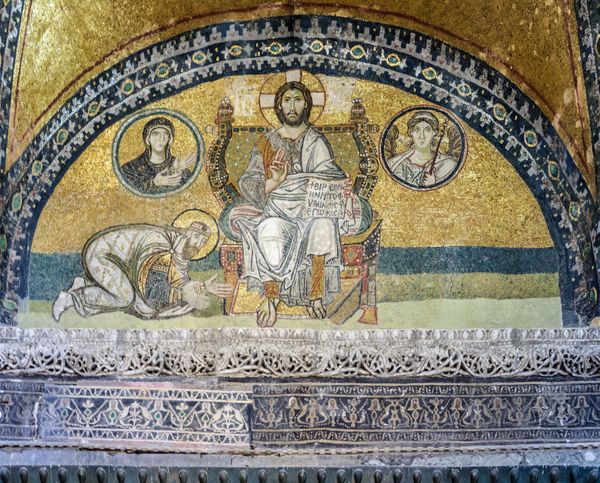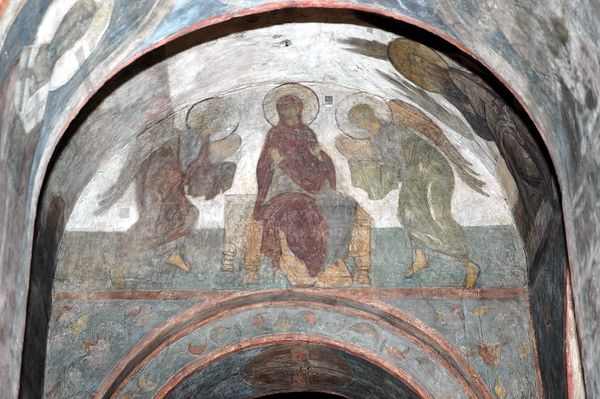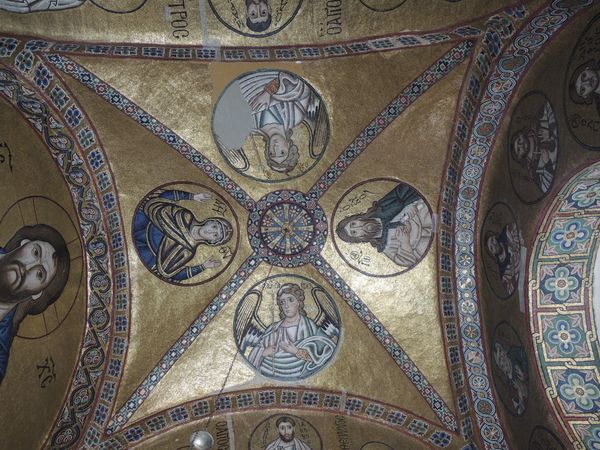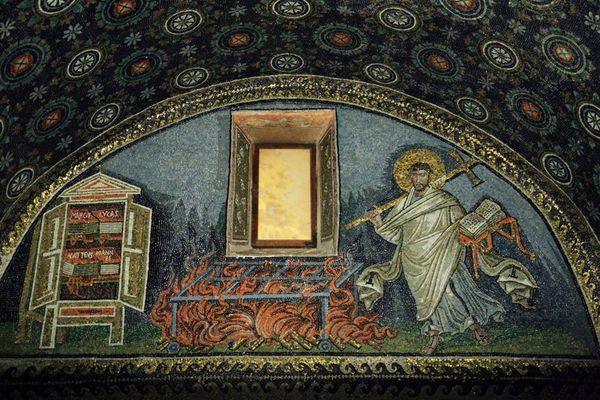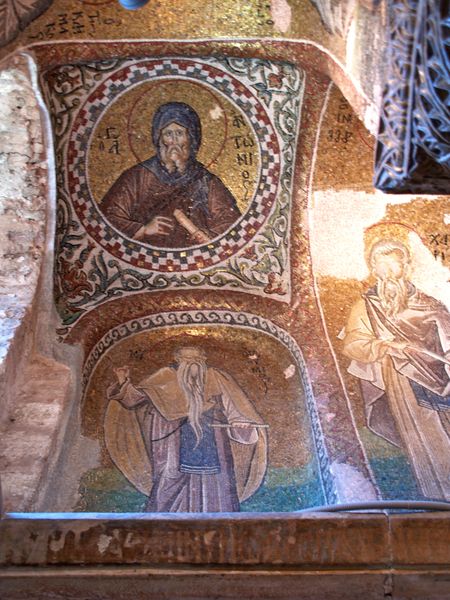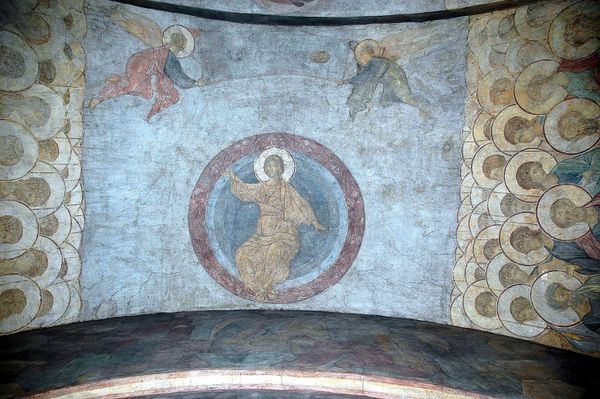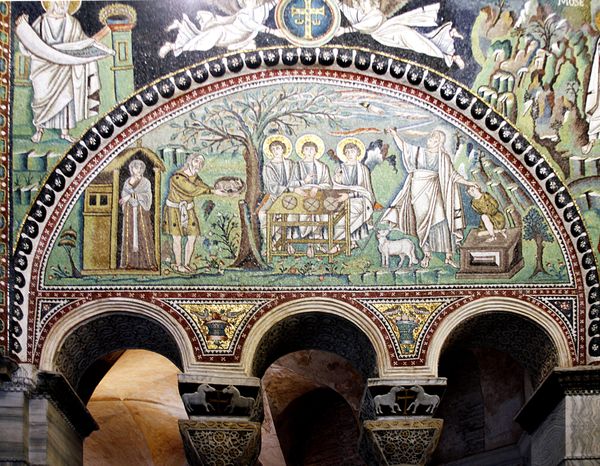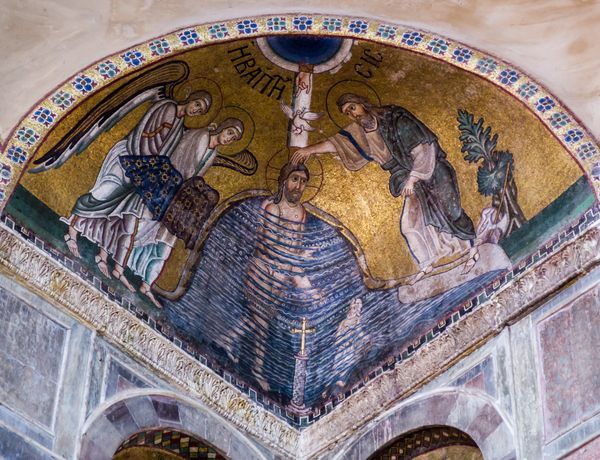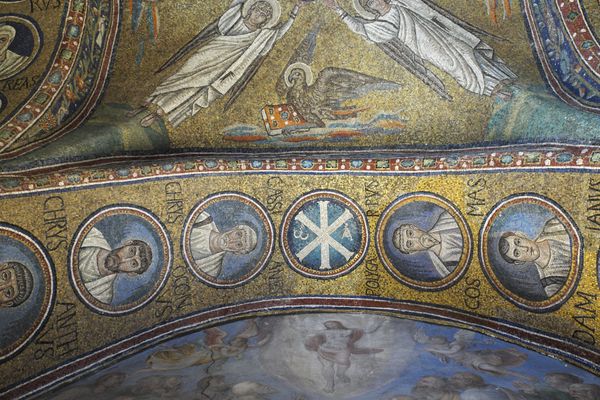
mosaic
#
mosaic
#
byzantine-art
#
medieval
#
sculpture
#
figuration
#
historic architecture
#
traditional architecture
#
history-painting
#
historical building
Copyright: Public domain
Editor: This is the "Eucharist Cycle," a mosaic dating back to 1113 in the Saint Sophia Cathedral in Kyiv. The golden backdrop gives it a heavenly feel, but the scene itself seems very ritualistic. How would you interpret this work, especially given its placement within such an important cathedral? Curator: This image speaks volumes about the symbolic weight placed on the Eucharist, the ritual of communion. The angels acting as deacons, presenting the bread and wine, visually reinforces its divine importance, transcending earthly matters. Editor: So the image reinforces a religious and cultural hierarchy? Curator: Exactly. Notice how Christ is depicted twice, receiving offerings and distributing communion. This duplication emphasizes his dual role. The gestures, too, are significant – hands covered, heads bowed, all demonstrating deep reverence and the correct order of things. The golden light surrounding the whole piece enhances its numinous, sacred quality. Consider too that the tradition in Orthodox Christian is of direct, divine authority. Does it trigger certain ideas in you about shared ritual? Editor: I see how these symbols create a sense of cultural continuity, even today. The repetition, the bowing - it’s a physical embodiment of belief. Thank you! Curator: And that physicality of belief links us across time, a visual memory encoded in art. The continued experience of communion continues to build our human sense of shared space and memory. A potent, symbolic representation indeed.
Comments
No comments
Be the first to comment and join the conversation on the ultimate creative platform.


